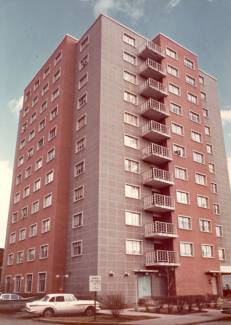Collection Name
About
The following four vignettes, all from different sources, provide some background and context as it pertains to the evolution of black schools and education in Cumberland, as well as Allegany County in general:
The road to education had been difficult for black children in Allegany County from the beginning. In 1869, sixty black children were attending school in Cumberland. A school for black students had also been established in Frostburg (but only after the land was donated by a local family), and by 1887 even Lonaconing had established a school. Prior to the construction of a school in 1896 in Westernport, somewhere between twenty-five to thirty children were receiving instruction in the African Methodist Episcopal Church. On December 15, 1894, a list of the schools of Allegany County was issued. It included the Cumberland Colored School which had a total enrollment of 131 pupils. Countywide, there were 211 black children attending classes and by 1900 the number of blacks who were unable to read and write had fallen to 360 from the 1870 figure of 542. Even though the black schools were underfinanced and received only limited support from the county, the attendance rates at these schools were higher than whites.
From: Allegany County - A History
In the 1903 Annual Report of the Allegany County Board of Education it was noted that a teacher from Allegany Mines, a community just north of Frostburg, had wanted to integrate black children into her school. The report goes on to read, "It was decided that if the teacher at Allegany Mines desired to instruct several colored children after school hours, the commissioners would give their consent, but permission for the children to be enrolled as regular pupils of the school could not be granted." The 1903 report also noted that Allegany Mines had also received a new four-room school building that year, at a cost of $2,199.
It was also noted in the 1903 report that about 100 students had moved into a new Jackson Street (Lonaconing) Colored School building that same year
From: "Comparisons drawn between schools of 1903 and 2000", an article appearing in the Cumberland Times-News, December 27, 2000 by James Rada.
"A colored public school was opened on North Mechanic Street, now the site of the Kennedy Homes, in 1898, with G.E. Moore, principal, and Anna M. Irving and Lillian McHenry, teachers. This school was torn down to build the Garden Theatre in 1927. By then, a new colored school had been built on Frederick Street.......On November 21, 1924, the Frederick Street Colored School gave a program at 8:30 pm. There were selections by the high school orchestra. Talks were given by Lawrence Males, W. Inez Cohran, Mae McIntyre, E.L. Browne, H.V. Talbot, and a solo was sung by Miss A.G. Taylor. A piano selection was given by Edith Cooper (additional informational on Edith Cooper appears elsewhere on this website).......
On July 17, 1925, the Board of Education of Allegany County offered for public sale a two-story brick building on North Mechanic Street formerly occupied as a Black grammar school. The building had been vacant for the last few years with the construction of the Frederick Street High School building for all Black children. The building had been erected in 1898 and served as a Black school until 1920."
From: Cumberland, Maryland Through the Eyes of Herman J. Miller
It was in the year 1918 that "Cumberland High School" was opened. This was a high school for blacks located on Mechanic Street (in the same facility as the previously mentioned "Mechanic Street colored school) and was organized as a two-year curriculum, with a four-year course of study initiated the following year. Increasing enrollments resulted in the opening of a new school on Frederick Street in 1922. There was some controversy within the community that such a nice facility would be provided for black students. For this reason, publicity surrounding the new, "Frederick Street School" as it became known, was downplayed for some time. The school name "Carver" came into existence in 1941 due to the desire of Principal Earle Bracey that the school take the name of an important black person. George Washington Carver won out over Frederick Douglas and Booker T. Washington in an election among the students.
Carver served students from Frostburg and numerous West Virginia communities, many of whom were often boarded with local families. As Allegany County schools became integrated in the 1950's Carver school was closed in 1959. However, in 1961, as a location was being sought for the brand new Allegany Community College, the old "Carver School" was renovated and served as the college's location for the first eight years before the new campus was constructed on Willowbrook Road. The former school mow serves as the Carver Community Center.
From: The Carver Community Center Museum
Note: Ironically, Earle L. Bracey, former Carver High School Principal, served on the Cumberland Housing Authority at the time of the John F. Kennedy Apartments dedication in 1967. As noted, the Kennedy Apartments stand upon the site of the old Cumberland High School for blacks, the school eventually replaced by the Frederick Street School which later became known as Carver.
Upon the sale and razing of the old Mechanic Street School in 1927, a movie house for African-Americans, the Howard Theatre, was established on the site. It was not financially successful, and the facility became known as the Garden Theatre.
Photograph: Photo Arts Studio, Cumberland, Maryland from the late 1960s
